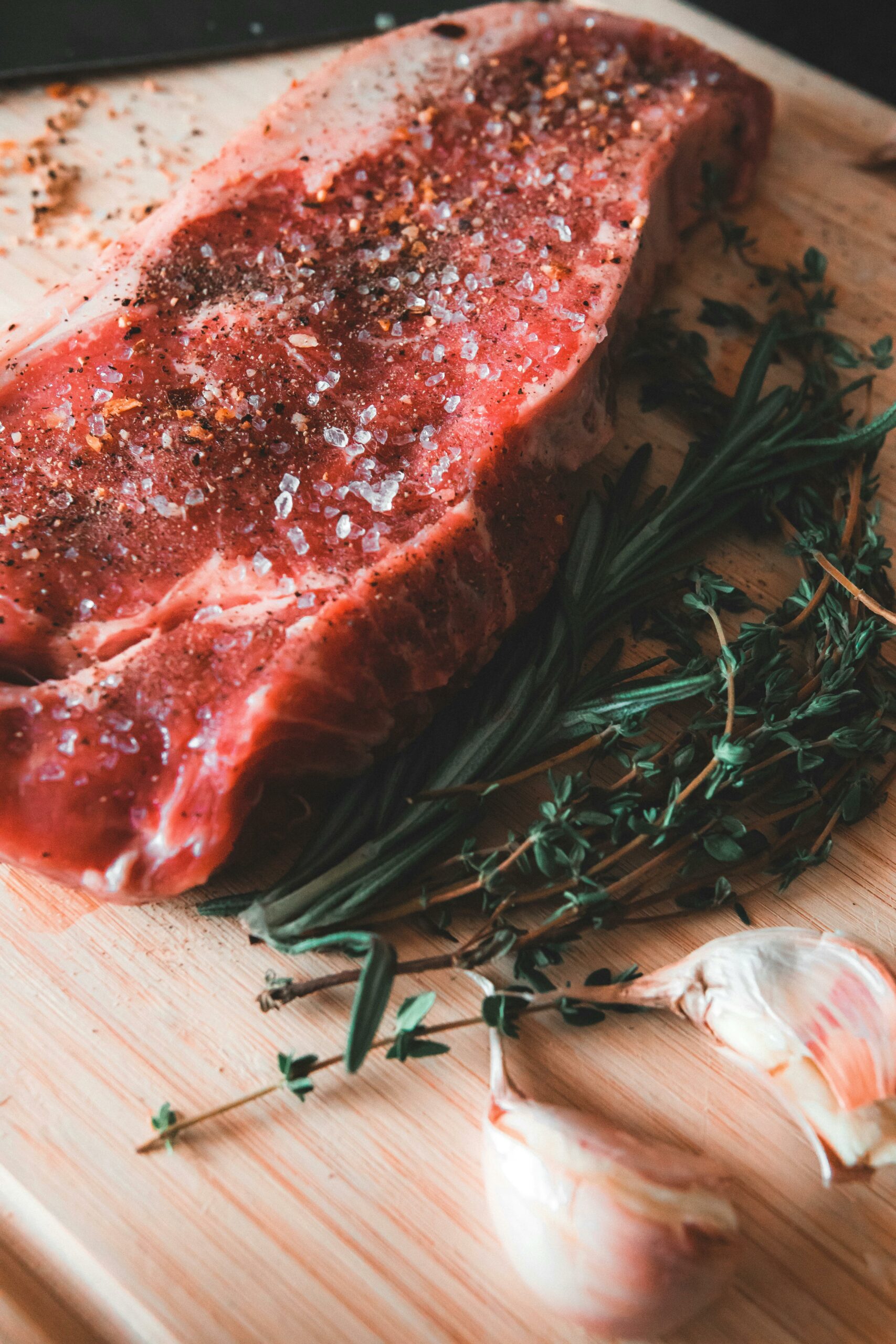Beef is a central food in many culinary cultures around the world. Whether in a juicy steak, a delicate tartare or a simmering stew, it offers a wealth of flavors and varied nutritional benefits. However, it is also at the heart of debates concerning health, ethics and the environment. This article explores the nutritional aspects of beef, the ways in which it can be eaten, and the implications for moderate, thoughtful consumption.
1. Beef: A wealth of essential nutrients
Beef is a valuable source of essential nutrients for the human body:
- High-quality protein: provides the nine essential amino acids needed for muscle building and cell repair.
- Heme iron: More easily absorbed by the body than plant iron, it helps prevent anemia, especially in women and children.
- Zinc: Essential for the immune system and wound healing.
- B vitamins: especially B12, essential for neurological function and the formation of red blood cells.
Calorie intake:
Beef is dense in calories and saturated fat, especially in certain cuts. A 100 g portion of minced meat contains around 250 calories, 20 g protein and 15 g fat.
Nutritional limits:
Excessive consumption of red meat, particularly processed red meat, is associated with an increased risk of cardiovascular disease and certain cancers, such as colon cancer. So it’s crucial to choose lean cuts and moderate your intake.
2. The different ways of eating beef
Beef is incredibly versatile. Here are some popular preparation methods and their nutritional implications:
a. Grilled or Seared
Grilled steaks are rich in flavor. However, overcooking can generate carcinogenic compounds such as polycyclic aromatic hydrocarbons (PAHs). To limit this risk:
- Marinate the meat before cooking.
- Cook over medium or indirect heat.
b. Simmered
Simmered dishes, such as boeuf bourguignon, allow you to cook more economical cuts that are rich in collagen, which is good for joints. This method preserves nutrients without excess fat.
c. Raw (Tartare)
Tartare, a raw meat specialty, retains all its rich proteins and vitamins, but requires impeccable hygiene to avoid food poisoning.
d. Chopped (Burgers, Bolognese)
Minced meat is ubiquitous, but may contain more saturated fat. Prefer homemade preparations with quality control.
3. Should you eat beef regularly?
Beef has its place in a balanced diet, but how often?
a. Moderate drinking: a healthy choice
Nutrition experts recommend limiting red meat consumption to 350 to 500 g per week to reduce the risks associated with chronic disease.
b. Alternatives
For those who want to reduce their beef consumption without going completely without, here are a few options:
- Vegetable proteins: lentils, chickpeas, tofu.
- Other meats: Chicken and turkey are leaner and less controversial.
- Alternative meats: Bison and venison are more sustainable and often leaner options.
4. Beef and Well-Being: Between Nutrition and the Environment
The beef debate goes beyond personal health to encompass environmental and ethical issues.
a. Environmental impact
Beef production is energy-intensive:
- It accounts for 15% of global greenhouse gas emissions.
- It consumes significant land and water resources.
Solutions:
- Choose meat from local, sustainable farms.
- Reduce the frequency of consumption and focus on quality.
b. Ethical issues
More and more consumers are opting for labels such as organic, or meat from farms that respect animal welfare.
5. The Advantages and Limits of Partial or Flexitarian Eating
Adopting a flexitarian approach, where meat is eaten occasionally, can offer benefits:
- Reduced risk of disease.
- Reduced carbon footprint.
- Discover new flavors and plant-based recipes.
However, stopping eating beef altogether requires vigilance to avoid deficiencies, particularly in iron and B12.
6. Where can I find quality beef?
To consume responsibly, choose reliable sources:
- Southern California – Our Premium Restaurant Quality Meats are Now Available Direct to Your Door.
- Chicago – Our Premium Restaurant Quality Meats are Now Available Direct to Your Door.
- Las Vegas – Our Premium Restaurant Quality Meats are Now Available Direct to Your Door.
Conclusion
Beef can be an asset to a balanced diet when consumed in moderation and with care. By choosing quality cuts, appropriate cooking methods and responsible sources, you can enjoy the benefits of beef while respecting your health and the environment. The real challenge is to strike a balance between gustatory pleasure, nutritional needs and global impact, a challenge that everyone can take up at their own pace and according to their own values.








